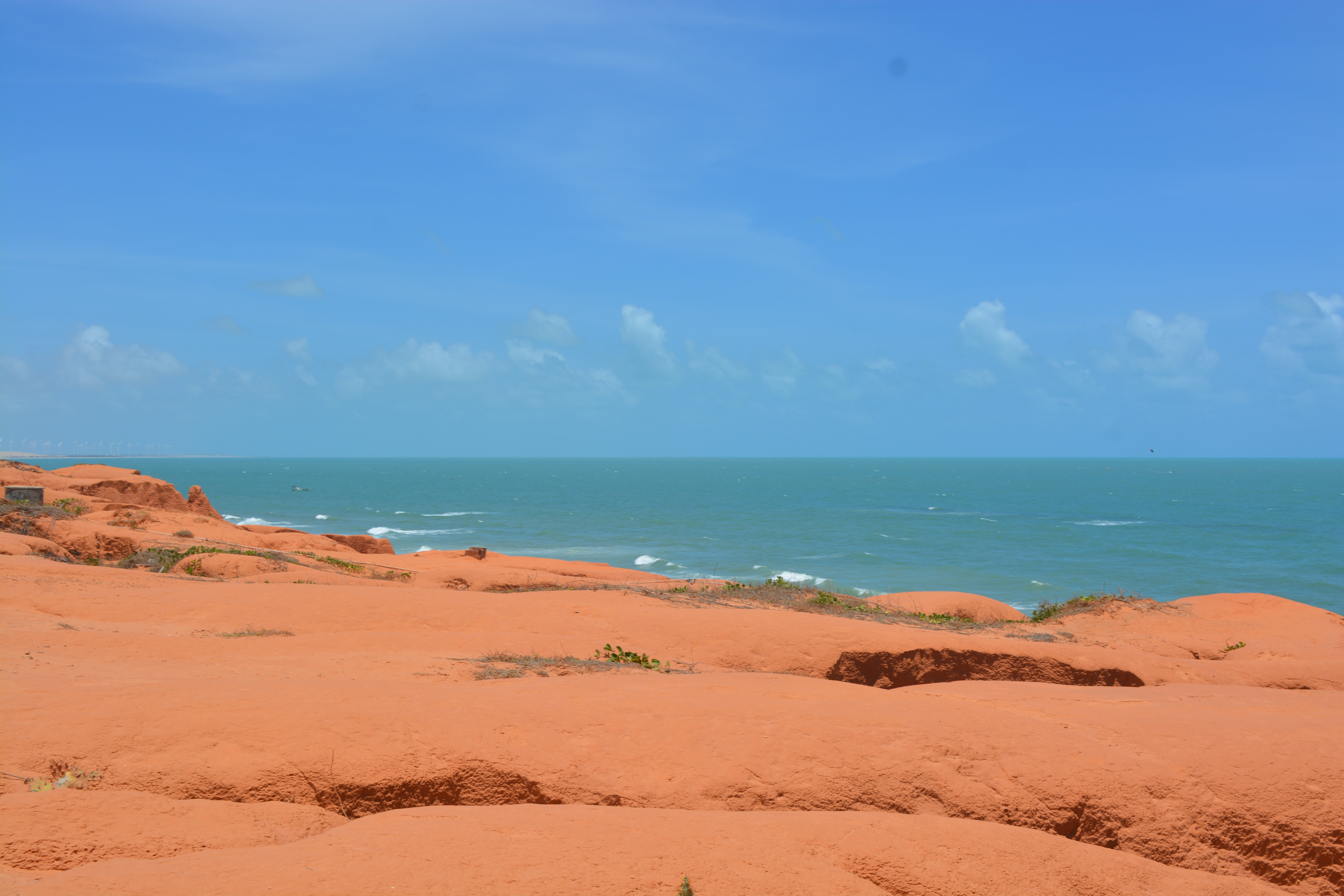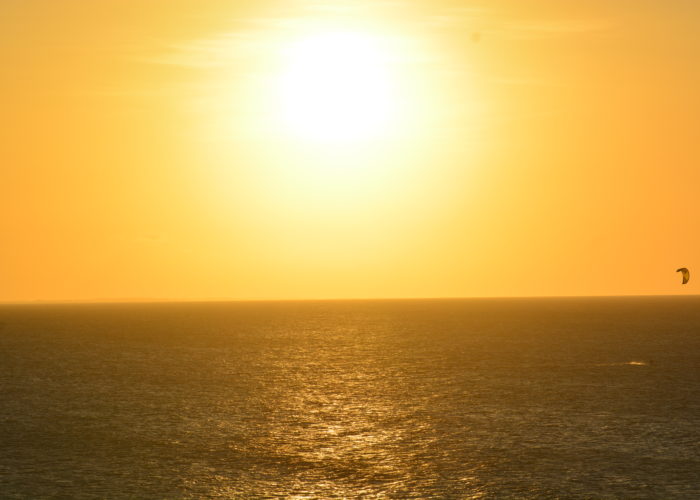After visiting Lençóis Maranhenses National Park, we continued our Dragoman journey along Brazil’s northern and eastern coast to explore some of its most beautiful beach resorts. This region, just a few degrees south of the Equator, is known for its kilometres of golden sandy beaches, sheltered by dramatic cliffs or expansive dunes. Most visitors are local Brazilians, and mass international tourism has yet to discover this coastline fully.
Overview of the Region
The northern Brazilian beach resorts of Jericoacoara, Canoa Quebrada, and Praia da Pipa are situated in the states of Ceará and Rio Grande do Norte. Each resort offers a distinct vibe, but they share common elements—fine golden sand beaches, azure waters, and a largely unspoilt environment. These resorts are relatively small compared to nearby cities like Fortaleza and Natal, but their charm lies in their blend of natural beauty and vibrant local culture.
- Jericoacoara (Jeri) is part of the larger municipality of Jijoca de Jericoacoara, which has a population of approximately 25,555. However, the town of Jericoacoara itself has a smaller core population of around 3,000 residents, which fluctuates considerably with tourism. The town’s remoteness and its sandy streets make it a haven for travellers seeking a mix of adventure and relaxation.
- Canoa Quebrada has a permanent population of about 4,000 residents. It also experiences a significant influx of tourists during peak seasons. Its sleepy village atmosphere contrasts with the grandeur of the red cliffs that border its beach.
- Praia da Pipa is the largest of the three, with a population of around 6,000, though it feels busier due to its popularity with tourists from the nearby city of Natal.

Geography & Climate
The coastline of northern Brazil is defined by its dunes, cliffs, and tropical vegetation. The constant trade winds that sweep across the coast keep the climate warm and breezy year-round, making it ideal for beach activities and watersports. Jericoacoara’s sprawling dunes offer an impressive, desert-like landscape, while Canoa Quebrada’s iconic red cliffs and Praia da Pipa’s lush tropical greenery provide equally stunning natural backdrops. The region enjoys a tropical climate with warm temperatures throughout the year, and rainfall is generally concentrated in the first half of the year, leaving the beaches mostly dry and sun-drenched in the latter half.
History & Economics
Historically, these resorts were fishing villages, and remnants of this past are still visible in the local culture and coastal economy. Jericoacoara, for example, was a remote hippie enclave before gaining international fame as a kiteboarding and windsurfing paradise. Canoa Quebrada, once frequented by bohemian travellers, retains a more relaxed vibe compared to its trendier neighbour, Jeri. Praia da Pipa, nestled near Natal, has evolved into a fashionable beach destination, attracting both local and foreign visitors. The proximity of Fortaleza (a city of 4.5 million people) and Natal (with a population of around 900,000) influences the tourism economies in these regions, with day-trippers and weekend tourists flocking to the beaches. Wind farms, particularly near Praia da Pipa, play a significant role in the local economy, harnessing the strong winds that sweep across the region to generate sustainable energy.

Jericoacoara
Jeri, as it’s known locally, is a small, remote beach town nestled between sand dunes. One of the principal ways to reach it is by buggy or four-wheel-drive vehicle, navigating through sandy roads and beach tracks. The sandy streets of the town lend a laid-back, barefoot feel, with beachwear boutiques and small bars adding to the charm. Jeri’s main beach is lined with drink stalls offering caipirinhas and other tropical beverages, making it easy to grab a cocktail and head down to the water.
One of the town’s highlights is the large sand dune at the end of the main beach. At dusk, crowds gather atop the dune to witness the vibrant sunsets, with colours ranging from deep oranges and pinks to the rare green flash, caused by the refraction of light just as the sun dips below the horizon. Another popular activity in Jeri is the dune buggy rides, where you can explore the beach and dunes. Just outside town is Pedra Furada, a striking rock arch carved by the sea, where visitors line up for the perfect photo op against the ocean backdrop.

We stayed at Pousada Paraíso, a charming and rustic hotel that embraces the laid-back vibe of Jeri. The pousada features hammocks on the verandas, and the rooms are designed with natural materials, making it an inviting place to unwind after a day exploring the dunes and the beach.
Canoa Quebrada
Canoa Quebrada is smaller and quieter than Jeri, offering a more low-key experience. The resort is protected by striking red cliffs, which shelter it from the winds and create a unique contrast against the pale sandy beach. The fishing boats, resembling hand-made rafts, are often seen bringing in the day’s catch, adding to the sense of a traditional fishing village still being at the heart of this place. Canoa’s main street, known as Broadway, is lined with more affordable boutiques, bars, and restaurants catering to a Brazilian crowd.

One memorable experience here was hiring horses for a ride along the beach. We rode through the surf, the horses splashing through the waves as we galloped along the shoreline, with the warm tropical breeze in our faces. In the evening, Canoa takes on a relaxed atmosphere, with live music spilling out from small bars and restaurants.
We stayed at Pousada Barboleta, a charming guesthouse with an inviting swimming pool that was perfect for a refreshing dip after a day spent exploring the beach and dunes. Its peaceful setting provided a perfect contrast to the vibrant energy of the beach.
Praia da Pipa
Praia da Pipa, just south of Natal, is a more sophisticated and upmarket beach resort compared to Jeri and Canoa. The town itself is surrounded by lush green cliffs, tropical forests, and a string of golden beaches. Boutique shops, gourmet restaurants, and bars line the streets, giving it a cosmopolitan vibe. While it draws in a more affluent crowd, the natural beauty of Pipa remains a primary attraction. Dolphins are often seen playing in the surf, and boat tours frequently take visitors out for a closer look.

We stayed at Pousada Sol da Pipa, which, like the resort itself, had a relaxed but stylish atmosphere. The beach here is as beautiful as the others along the northern coast, with fine sand and clear water. It was an excellent place to unwind after our coastal journey.
Environment
The beaches of Jericoacoara, Canoa Quebrada, and Praia da Pipa offer some of Brazil’s most pristine coastal environments. Jeri is part of a protected national park, and regulations on construction and traffic have helped preserve its dunes and natural beauty. The trade winds that make it a top destination for windsurfing also help keep the air fresh and the skies clear.
In Canoa Quebrada, the orange cliffs create a natural barrier against strong coastal winds, preserving the sandy shoreline. The fishing boats that dot the beach are not only picturesque but also a reminder of the region’s fishing heritage. The quiet atmosphere here allows for a more intimate connection with nature, whether through swimming, surfing, or simply walking along the beach.

Praia da Pipa’s beaches are flanked by tropical vegetation, and its cliffs provide stunning vistas of the Atlantic. Efforts to preserve the area’s wildlife, including dolphins, have made it a popular eco-tourism spot. Although Pipa has more development than Jeri and Canoa, local authorities have implemented measures to balance tourism growth with environmental protection.

Final Thoughts
Northern Brazil’s beach resorts offer a glimpse into a more relaxed and authentic side of the country, far from the international tourist hotspots. From Jeri’s sandy streets and colourful sunsets to Canoa’s horseback rides through the surf and Pipa’s vibrant town centre, each resort has its unique charm. The beaches are stunning, the environment remains largely unspoiled, and the warm hospitality of the local people makes this region a standout destination for anyone seeking both relaxation and adventure.
Dates: 28/10/2018 to 02/11/2018 – Dragoman Days 8 to 13
















